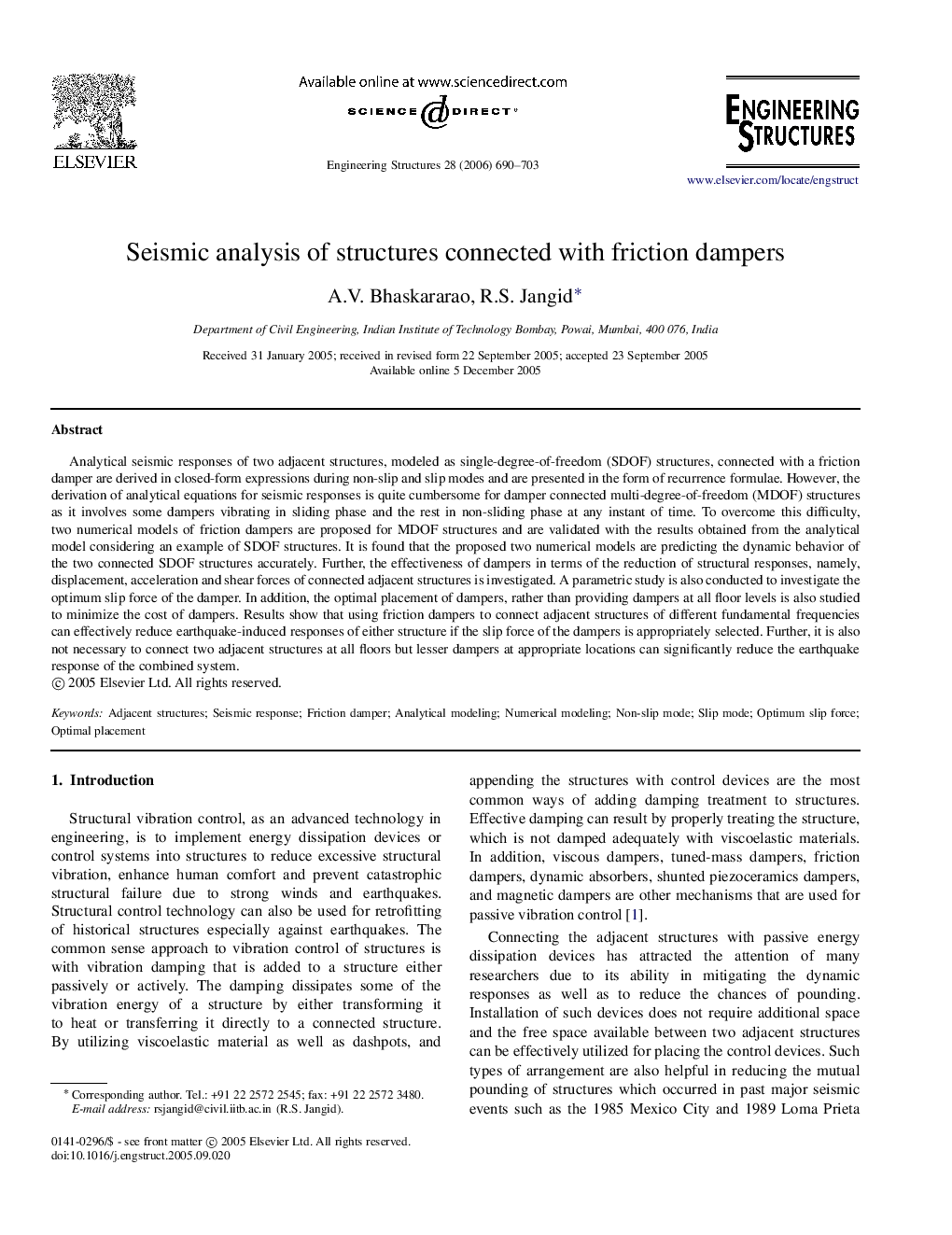| Article ID | Journal | Published Year | Pages | File Type |
|---|---|---|---|---|
| 269603 | Engineering Structures | 2006 | 14 Pages |
Analytical seismic responses of two adjacent structures, modeled as single-degree-of-freedom (SDOF) structures, connected with a friction damper are derived in closed-form expressions during non-slip and slip modes and are presented in the form of recurrence formulae. However, the derivation of analytical equations for seismic responses is quite cumbersome for damper connected multi-degree-of-freedom (MDOF) structures as it involves some dampers vibrating in sliding phase and the rest in non-sliding phase at any instant of time. To overcome this difficulty, two numerical models of friction dampers are proposed for MDOF structures and are validated with the results obtained from the analytical model considering an example of SDOF structures. It is found that the proposed two numerical models are predicting the dynamic behavior of the two connected SDOF structures accurately. Further, the effectiveness of dampers in terms of the reduction of structural responses, namely, displacement, acceleration and shear forces of connected adjacent structures is investigated. A parametric study is also conducted to investigate the optimum slip force of the damper. In addition, the optimal placement of dampers, rather than providing dampers at all floor levels is also studied to minimize the cost of dampers. Results show that using friction dampers to connect adjacent structures of different fundamental frequencies can effectively reduce earthquake-induced responses of either structure if the slip force of the dampers is appropriately selected. Further, it is also not necessary to connect two adjacent structures at all floors but lesser dampers at appropriate locations can significantly reduce the earthquake response of the combined system.
